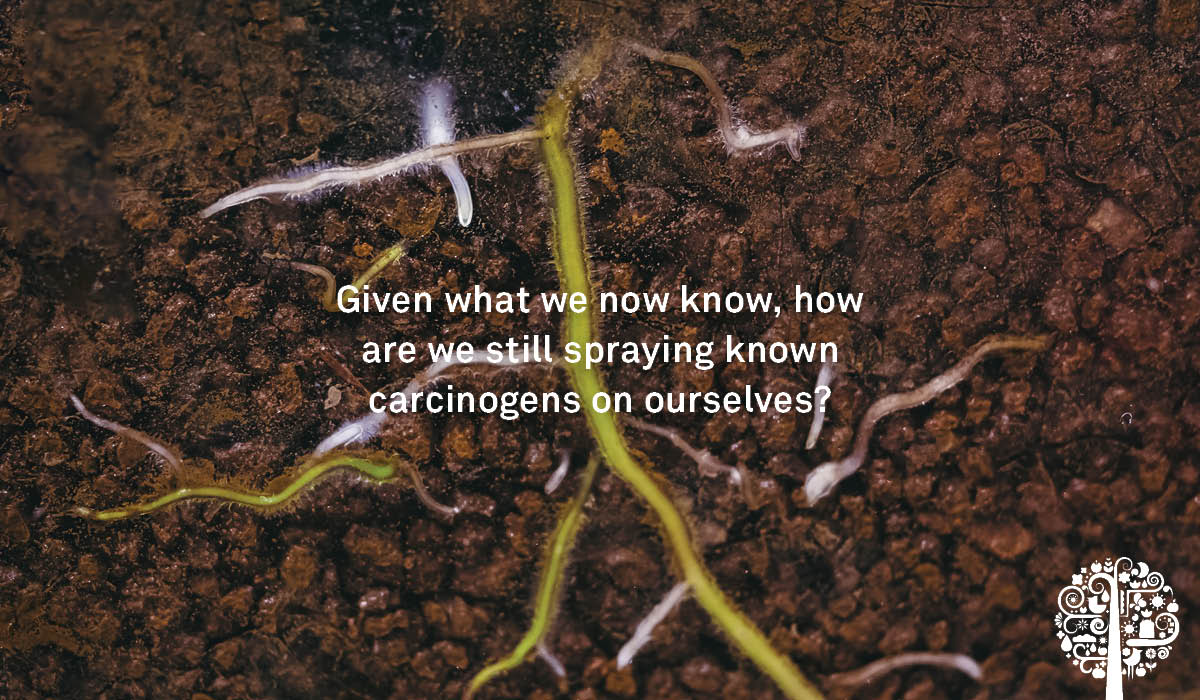The way we treat the soil reflects the way we treat ourselves, and the way we treat ourselves is the way we treat the world. Unfortunately, these critical truths are generally absent from the actions of modern civilization. Collectively, we have abandoned our agricultural identity and our accountability for how we engage with the natural world.
Food Sovereignty
My work is around inviting people back to the table to be a part of agriculture again; to try and tie together the realms of food, farming, and health in a way that can generate healthy people, plants, and planet through a lens of food sovereignty. This signals to the broader idea that the challenges that we face can only be solved by approaching solutions systematically and enacting the reality that we cannot solve dynamic problems with linear thinking.
There is the perception that doing things more responsibly will cost more, but this is misguided. When it comes to quality of life and quality of place, the question should not be how much it costs, but how much does it cost not to change?
If we followed this maxim, the way we build cities and civilizations would be far different. We would recognize the direct and enormous costs on society from hunger, poverty, and pollution. We would have green buildings, no landfills, pure drinking water, clean air, healthy soil, and socioeconomic conditions that provide an opportunity for all people to thrive.
Cost Analysis
We have to be brave enough to see that the violence and the crime we experience in urban centers result from people not having access to basic human essentials. But the way we are telling the economic story in this arena stunts our ability to see this clearly. Rather than exploring the actual cost of approaching social order, we look at the line item and decide we don’t have enough money.
As an example, the City of Orlando commissioned a study to explore the expense of chronic homelessness and found that an individual homeless person costs Orlando $31,000 per year. In contrast, providing the chronically homeless with permanent housing and case managers to supervise costs about $10,000 per person per year. In other words, in most cases, if we are curious and comprehensive, it costs less to do the right thing.
Regenerative Agriculture
In my work, I explore and leverage this idea of true cost accounting through the lens of regional regenerative agriculture systems. Regenerative agriculture allows us to address the significant issues that we face globally – climate, hunger, poverty, health. It is the most potent political issue of our time that nobody talks about.
I serve as an elected Supervisor of New Hanover Soil & Water Conservation District. One of the projects I am working on is an Organic Park Pilot project that will serve as a proof of concept to generate organic land care standards on city parks and property. This is an important project in its own right, but it also lays the foundation for a much larger conversation around waste stream management.

Changing land care standards is a big deal for a city steeped in conventional methods. The effort is not about swapping synthetic products for organic products. It is also not an attempt to ban certain known chemicals, resulting in potentially more dangerous chemicals replacing them. Instead, this is a paradigm shift away from chasing symptoms with toxic rescue chemistry and towards the perspective of growing healthy soil and using methods that protect public and environmental health.
The pilot project is being made possible by a donation from Stonyfield Organic and their #PlayFree initiative, which allows the City of Wilmington to cover any costs of implementing new organic land care methods in a city park as proof of concept. Along with the donation to the city, Stonyfield Organic provided funds for a two-year engagement with national organizations supporting staff training and policy work.
Following The Thread
The project started from questions that I asked at my son’s school about pesticide applications. When I didn’t get coherent answers, I followed the thread. I ultimately filed a public information request asking what pesticides had been used in the year 2019 and discovered that my city did not have a protocol for tracking pesticide applications. Not only is this alarming from a public health standpoint, but it presents a potential liability to the city. Chemicals such as glyphosate are losing lawsuits (and appeals) for causing cancer and other adverse health impacts. Notwithstanding the legal challenges, the public is getting educated and becoming activated on this issue and demanding change. Given what we now know, how are we still spraying known carcinogens on ourselves?
The project begins this fall, with the on-the-ground agronomy starting in spring 2022. Hopefully, everyone reading this article will open the same line of conversation where they live; just know that it can be a difficult road. I worked for over a year connecting with City Council, the Mayor and building relationships with national organizations experienced in the organic land care space that could help lay the groundwork for a successful pilot project. I am happy to pass along what I have learned so far if you want to reach out.
Environmental Policy
A focus on improving soil conditions has interesting and significant benefits for city operations and policy. One major benefit is carbon sequestration, which is the long-term capture of carbon dioxide from the atmosphere in the soil to combat climate change. For example, Wilmington, NC, just passed a resolution that commits the city to 100% clean energy by 2050 to reduce emissions, which is happening all across America. Increasing the carbon content of soil can be a valuable tool for cities to meet these ambitious goals.

Improving soil quality is also a tool for addressing stormwater challenges that result from unconscious development practices. The strategy for stormwater in cities typically amounts to funneling water from the gutter to the river, which, as cities further develop and increase the level of impervious surface, puts tremendous strain on stormwater infrastructure. For example, replacing a culvert that runs under the road to prevent flooding can cost many millions of dollars, so it is a far better strategy to encourage percolation by planting trees and holding water in the soil through increasing the organic matter content. For example, a 1% increase in organic matter holds 25,000 gallons of water, a 60×40′ swimming pool four feet deep, as a reference. Increasing organic matter in the soil by 3-4% is a fairly easy task if we establish composting policies and utilize parks and public land as carbon sinks.
Organic Land Care
Compost is the reason that organic land care is the foundation of the waste stream management. Organic matter does not just melt; it is decomposed by living microbes found in healthy soil that turn the raw organic matter into humus or perfect plant food. Most conventional land care practice is designed to try and kill symptoms, such as weeds and target pests and disease. This approach kills the beneficial organisms as well, crippling Mother Nature’s mechanism to build strength in her systems. A synthetic symptoms-based approach defeats the purpose of compost on most levels, which can result in people imagining that compost “doesn’t work”. In the end, it is not a matter of whether a natural approach to land management works; it is a matter of whether we have the perspective and patience to allow it to work.
Up to half of the materials in a landfill are compostable. If we choose to do so, cities can turn the liability of organic matter at scale into an asset with an ROI that can be a revenue generator into the future. Landfills are expensive. For example, Wilmington spends $1.4 million annually throwing trash away at the New Hanover County landfill. And New Hanover County recently spent almost $2 million expanding our landfill that will run out of room in 30-50 years, depending on who you ask. Given the precedent available for this work and the technology already at hand, this is not a responsible waste management strategy.
Living with Intention
A landfill presents an incredible opportunity to put system-thinking and true cost accounting to work. The materials we put into landfills have a value that can be sold and re-purposed in many different ways. For instance, there is a technology that can turn the glass waste stream into beach sand. Or gasification can be used to turn plastics and car tires into energy with no emissions. Pyrolisis can turn wood waste into biochar that can serve as a soil amendment, and powerful water filters can clean polluted lakes and streams. These technologies and more already exist, and we can use them to end landfills right now with intention.

The world is written by narrative and incentive, so the objective is to tell the story and apply systems-thinking to local projects. Then, we can tie these projects to broader movements, explore the true costs of the status quo and regenerative solutions to turn perceived deficits into surpluses, and inspire people to put their will into action.
If we fix the soil, we fix ourselves. If we followed this truth to the end, we could face significant challenges with real solutions, and we could realize the abundance available to us all. The Covid moment broke us open; it highlighted the gaps in society and delivered them to our doorstep and provided a moment to consider doing things in a new way. If the people are ready, politics will follow.
Easier said than done, but doable. Also necessary so that we may heal the Earth.